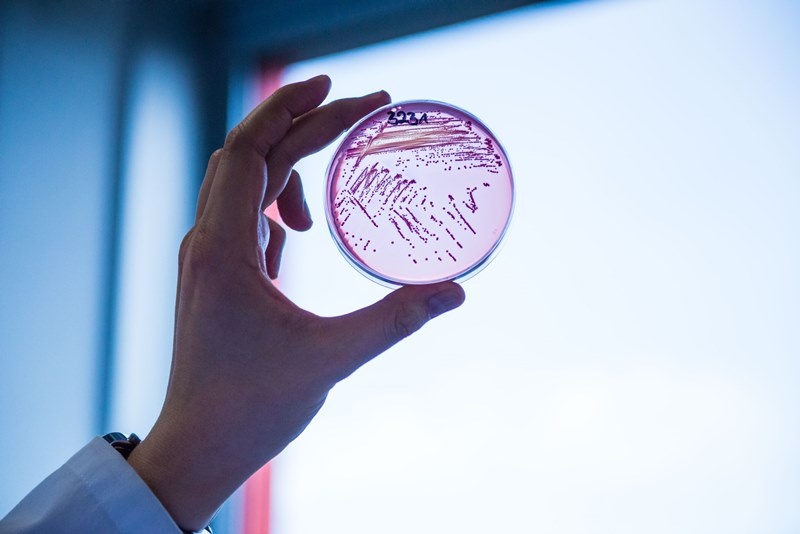News • Antibiotic resistance
A strain of multidrug-resistant Escherichia coli is on the rise
Escherichia coli, or E. coli, is a member of a group of Gram-negative Enterobacteriaceae that predominantly reside in the human gut. Their treatment is becoming increasingly challenging: in the fight against antibiotics E. coli bacteria and other Enterobacteriaceae have developed enzymes, so-called extended-spectrum beta-lactamases (ESBL), which render antibiotics ineffective.
"We need to pay particular attention to a subset of multidrug-resistant E. coli bacteria which we have found in our current study,” explains Prof Trinad Chakraborty, Director of the Institute for Medical Microbiology at the JLU in Gießen and Coordinator at the DZIF partner site Gießen-Marburg-Langen. This subset is currently spreading globally and has now also been found in Germany.

Genome sequencing for monitoring antibiotic resistance
In the study, the scientists from Gießen investigated almost 1000 isolates of ESBL-producing bacteria from humans, animals, the environment and food. Their approach is in-line with the One Health approach which not only includes humans but also the respective environment in investigations. They specifically identified beta-lactamase genes and searched for a subset which had already increasing in other countries: a multidrug-resistant strain of E. coli, sequence type 131 (ST131). This strain is responsible for millions of infections worldwide, particularly for blood stream and bladder infections, and carries a relatively rare ESBL gene called blaCTX-M-27. The quest was successful: the researchers found E. coli ST131 CTX-M27 to be exclusively present in the human isolates and could confirm that its incidence had increased from 0 % in 2009 to 45 % in 2016.
“With this, this E. coli strain and its specific ESBL gene has become a competitor for an E. coli ST131 strain carrying a different ESBL gene, which has been the most prevalent in Germany up to now,” explains Dr Can Imirzalioglu, scientist at the Gießen University. More studies are required to investigate the causes and clinical implications of this shift. However, the results highlight the importance of modern methods such as genome sequencing for observing developments like this and for reacting rapidly in emergencies.
Source: Deutsches Zentrum für Infektionsforschung
25.10.2017










